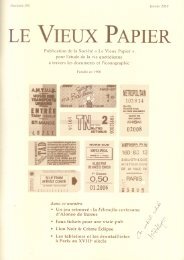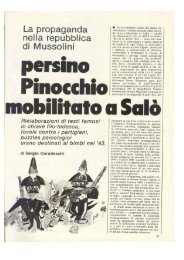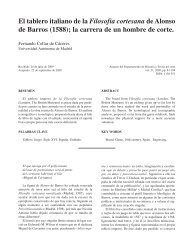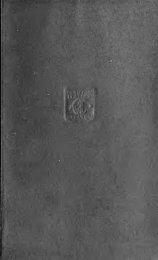Board games from the city of Vijayanagara (Hampi ... - Gioco dell'Oca.
Board games from the city of Vijayanagara (Hampi ... - Gioco dell'Oca.
Board games from the city of Vijayanagara (Hampi ... - Gioco dell'Oca.
Create successful ePaper yourself
Turn your PDF publications into a flip-book with our unique Google optimized e-Paper software.
P. M ICHAELSEN, ON SOME UNUSUAL TYPES OF STICK DICE 19<br />
half as many strikes are to be made. Should it rest inside <strong>the</strong> circle one man <strong>from</strong> <strong>the</strong> outteam<br />
is out. Should it rest inside <strong>the</strong> circle with <strong>the</strong> cross (krøss) upwards, <strong>the</strong>n two men<br />
are out. Should it rest outside <strong>the</strong> circle with <strong>the</strong> krøss upwards, <strong>the</strong>n one man <strong>from</strong> <strong>the</strong><br />
out-team is out. In nixepinne <strong>the</strong> side <strong>of</strong> <strong>the</strong> dice stick named nix had a similar function.<br />
In <strong>the</strong> Scotch strac agus cat <strong>the</strong>re is no cross on <strong>the</strong> dice stick, but only <strong>the</strong> numbers 1,<br />
2, 3, 4. These numbers count if <strong>the</strong> person who throws <strong>the</strong> cat does not strike <strong>the</strong> strac,<br />
which is <strong>the</strong> 18 inches long bat laid across <strong>the</strong> opening <strong>of</strong> a hole, seven yards away. In<br />
<strong>the</strong> Faroese exebiti, <strong>the</strong> Norwegian abeseditt and <strong>the</strong> West-Flemish wiep-slaan and<br />
duzend-slaan, <strong>the</strong> numbers on <strong>the</strong> dice stick are larger, up till 100 in <strong>the</strong> Norwegian and<br />
Flemish <strong>games</strong>. In <strong>the</strong>se <strong>games</strong> <strong>the</strong>y directly indicate <strong>the</strong> number <strong>of</strong> points scored.<br />
If we now return to <strong>the</strong> above-mentioned Lang Larence <strong>from</strong> Yorkshire, we may perhaps<br />
have found a possible explanation <strong>of</strong> <strong>the</strong> signs on its sides. The ten crosses and <strong>the</strong><br />
zigzag forming a W or triple V, are also found on <strong>the</strong> Flemish dice sticks, in which <strong>the</strong><br />
crosses have <strong>the</strong> value 100 and W is an abbreviation <strong>of</strong> ‘wiep’ with <strong>the</strong> value <strong>of</strong> ‘niets’, that<br />
is nothing. It makes good sense that <strong>the</strong> side named flush, which allows <strong>the</strong> player to take<br />
all stakes, is connected with a high number like 100, while <strong>the</strong> side named lave all, which<br />
nei<strong>the</strong>r takes or gives, is marked with a letter standing for zero. It is also easy to see why<br />
<strong>the</strong> side put doan two has been given <strong>the</strong> double value <strong>of</strong> <strong>the</strong> side sam up one: 6 and 3,<br />
respectively.<br />
The special design <strong>of</strong> <strong>the</strong> Lang Larence is quite unique among instruments used for<br />
‘put-and-take’ <strong>games</strong>. Instead <strong>of</strong> looking for parallels in Korea, as Stewart Culin did, (47)<br />
one should consider if it could be related to <strong>the</strong> similar design <strong>of</strong> Nor<strong>the</strong>rn European dice<br />
sticks used for <strong>games</strong> <strong>of</strong> physical dexterity. It is difficult to say if <strong>the</strong>re was a direct connection<br />
between <strong>the</strong> Flemish dice stick <strong>games</strong> and <strong>the</strong> Yorkshire game; dice stick <strong>games</strong><br />
were also known on <strong>the</strong> British isles, as <strong>the</strong> example <strong>of</strong> strac agus cat <strong>from</strong> Scotland shows.<br />
The names <strong>of</strong> <strong>the</strong> Norwegian <strong>games</strong> kattepinne and katt reveal that <strong>the</strong>y came to <strong>the</strong><br />
Bergen area and <strong>the</strong> Lista area in South West Norway <strong>from</strong> somewhere on <strong>the</strong> British<br />
isles. Judging <strong>from</strong> <strong>the</strong> close similarities between <strong>the</strong> Norwegian <strong>games</strong> and <strong>the</strong> strac agus<br />
cat <strong>from</strong> Argyleshire, <strong>the</strong>y could have well come <strong>from</strong> Scotland. As <strong>the</strong> game nixepinne is<br />
more or less identical with kattepinne and katt, it may have come <strong>from</strong> <strong>the</strong> same area.<br />
However, <strong>the</strong> name nix referring to <strong>the</strong> side with <strong>the</strong> X seems to connect this game with<br />
<strong>the</strong> Flemish stick game duzend-slaan, in which <strong>the</strong> same side was called niets, nothing.<br />
It is evident that <strong>the</strong> South-West Norwegian game abeseditt is closely related to <strong>the</strong><br />
Flemish game. Its name probably refers to <strong>the</strong> four first letters <strong>of</strong> <strong>the</strong> alphabet: a, b, c and<br />
d, one letter for each <strong>of</strong> its four sides.<br />
Exebiti is not an original Faroese game. Its name is borrowed <strong>from</strong> <strong>the</strong> words pronounced<br />
by <strong>the</strong> person who strikes <strong>the</strong> stick: “Exebite, exaksebiti”, probably Latin: “excipite,<br />
ecce accipite”, meaning “catch, watch (out), grab it!”. The circle or ring is named roti,<br />
again a Latin word. Johan Christian Svabo recounts in 1782 that this game was considered<br />
to have been brought to <strong>the</strong> Faroe isles by sailors, possibly French.<br />
Cat sticks with Roman numerals, serving as a sort <strong>of</strong> dice, are not known <strong>from</strong><br />
Denmark and apparently not <strong>from</strong> Nor<strong>the</strong>rn Scandinavia ei<strong>the</strong>r; <strong>the</strong>y are only recorded<br />
for <strong>the</strong> sou<strong>the</strong>rn and south-western coast <strong>of</strong> Norway between Oslo and Bergen. Along







